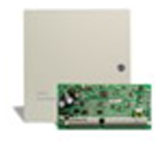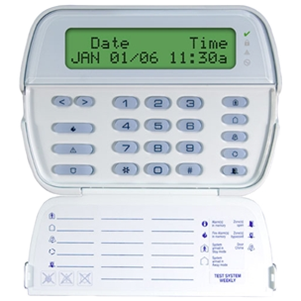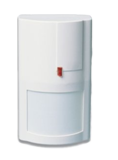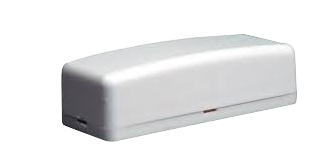It is literally a means or method by which something is secured through a system of interworking components and devices.
In this instance, we’re talking about home security systems, which are networks of integrated electronic devices working together with a central control panel to protect against burglars and other potential home intruders.
A typical home security system includes:
• A control panel, which is the primary controller of a home’s security system
• Door and window sensors
• Motion sensors, both interior and exterior
• Wired or wireless security cameras
• A high-decibel siren or alarm
• A yard sign and window stickers
How does a security system work?
Home security systems work on the simple concept of securing entry points into a home with sensors that communicate with a control panel or command center installed in a convenient location somewhere in the home.
The sensors are typically placed in doors that lead to and from a house as well as easily accessible windows, particularly any that open, especially those at ground level. Open spaces inside of homes can be secured with motion sensors.
Control Panel: The control panel is the computer that arms and disarms the security systems, communicates with each installed component, sounds the alarm when a security zone is breached, and communicates with an alarm monitoring company.
They typically feature a touchpad for easy programming and interaction, is where pass codes are entered to arm and disarm the system, can work on voice commands, and can be programmed to work with wireless remote controls called key fobs.
Door and Window Sensors: Door and window sensors are comprised of two parts installed adjacent to each other. One part of the device is installed on the door or window and the other on the door frame or window sill. When a door or window is closed, the two parts of the sensor are joined together, creating a security circuit.
When the security system is armed at the control panel, these sensors communicate with it by reporting that the point of entry is secure. Should a monitored door or window suddenly be opened, the security circuit is broken and the control panel interprets this as a breach of a secured zone. A high-decibel alarm is sounded and in most instances the alarm monitoring company is automatically notified.
Motion Sensors: These security components, when armed, protect a given space by creating an invisible zone that cannot be breached without sounding an alarm. These are typically used to protect rooms containing valuables, as well as areas less frequented in larger homes.
High-decibel Alarm: Loud enough for neighbors to hear, home security alarms serve a few different purposes. First, they alert the people inside the house that a problem occurred. They’re also shrill enough to send a burglar running while also notifying nearby neighbors to the situation.
Yard Sign and Window Stickers: On the surface, these items might seem like nothing more than marketing tools for alarm companies, but they play important roles in home security. When you place a security company’s sticker in a front window and plant their sign in your front yard, you are telling burglars you home is professionally protected and not a wise choice for an attempted burglary. They are effective at conveying this message and should be used as recommended by the security company.
What are the advantages of having a home security system?
Numerous studies show homes without security systems, when compared to those with professionally monitored systems, are up to three times more likely to be burglarized because burglars are opportunistic by nature and are on the hunt for easy targets.
Homes without security systems are high on their list.
When you have a home security system professionally monitored, and advertise this by displaying window stickers and yard signs, you’re letting burglars know the likelihood they’ll fail and be caught are very high.
Another advantage is the ability to remotely manage your house. With this, you can typically arm and disarm your security system , as well as use a panic button to elicit an instant response from your alarm monitoring company.
DSC PowerSeries Control Panel PC1832
• 8 on-board zones
• Expandable to 32 hardwired zones 
• Expandable to 32 wireless zones
• 2 PGM outputs: expandable to 14 (PC5204, PC5208)
• Connect up to 8 supervised keypads with keypad zones
• Template programming
• 4 partitions
• 500-event buffer
• 72 user codes
• CP-01 compliant
• Supports WT5500 wire free keypads with TR5164-433 transceiver
PowerSeries 64-Zone LCD Full-Message Keypad
DSC PK5500
• 8 language support
• Global partition status 
• Full 32-character programmable phrases
• Modern, slim-line landscape keypad
• Enlarged keypad buttons
• 5 programmable function keys
• Intuitive clock programming (with PowerSeries Panels)
• Input/Output terminal can be programmed to operate as a zone input, programmable output or as a low temperature sensor
• Individual FAP keys
• Multiple door chime per zone
• Adjustable backlight and keypad buzzer
• Wire channel
• Dual wall-mount and front cover tamper
• Easy-to-install mounting hinge
• Surface or single-gang box mount
Dual Element pet Immune PIR DSC- BV-601

• Digital signal analysis for consistent detection throughout the coverage pattern
• Digital temperature compensation for improved catch performance at critical temperatures
• Patented Multi-Level Signal Processing (MLSP) for accurate detection of human IR energy over a broad range of temperatures
• Pet immunity up to 85 lb (39 kg)
• Optional mounting brackets available: DM-W (wall-mount bracket) or DM-C (ceiling-mount bracket)
Wireless Pet Immune Passive Infrared Detector
DSC WS4904P
• Based on the Bravo® 3D hardwire motion detector
• High-traffic shutdown 
• WS4904P features pet immunity up to 60 lb (27 kg)
• 1 lithium battery included
Wireless Door/Window Contact
WS4945W
• Built-in reed switch
• Normally closed external contact input 
• 1 lithium battery included
• Reliable 433 MHz technology
• Available in brown housing • Case and wall tamper
• Wireless Door/Window Contact WS4945* •
• Built-in reed switch
• Normally closed external contact input •
• 1 lithium battery included
• Available in brown housing
Wireless Shock Sensor With Built-In Door/Window Contact
Make: DSC EV-DW4927
• Electro mechanical shock sensor
• Adjustable sensitivity
• Pre-alert
• Built-in reed contact
• User-replaceable lithium battery
Wireless 4-Button Alarm Keyfob
Make : DSC Model no.WS4939
• Durable, scratch resistant buttons
• (4) programmable function keys
• Full 3-second delay on panic function
• Integrated LED to indicate signal transmission
• Multifunction belt clip included
• Optional generic rubber insert (included)
• Water resistant
• Reliable 433 MHz technology


